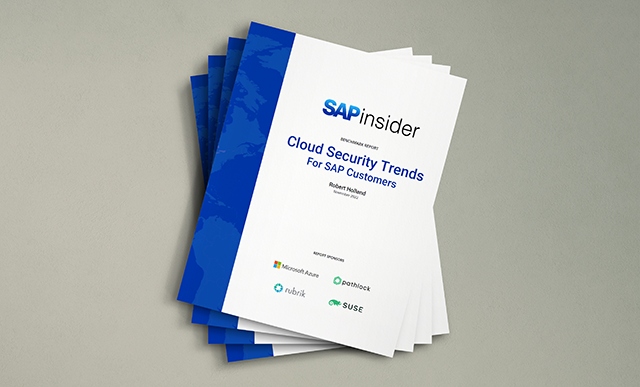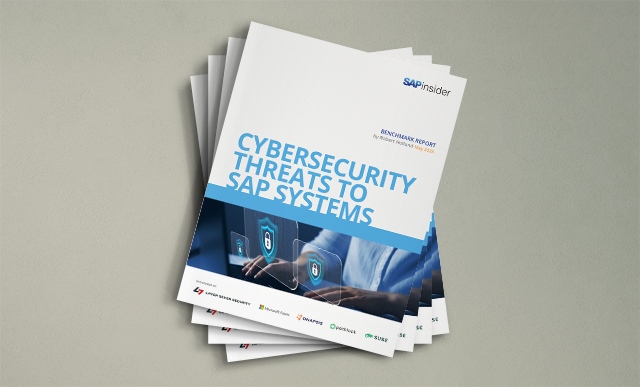Securing SAP Systems in the Age of Artificial Intelligence
Key Takeaways
⇨ Cybersecurity is an organization's cost center as only few organizations have robust security resources.
⇨ To address the evolving cyber threats in the SAP ecosystem, cybersecurity experts specializing in SAP must incorporate AI into their technological solutions.
⇨ The use of AI can assist cybersecurity professionals in securing and safeguarding SAP systems in five key areas - threat detection, risk assessment, incident response, phishing detection and response, and automation.
Historically, SAP has employed conventional methods to secure its systems. However, the most critical areas in SAP cybersecurity now require professionals to leverage Artificial Intelligence (AI). The rampant use of artificial intelligence technology has led to complexities securing SAP systems. As AI grows in potency and the threat landscape becomes increasingly sophisticated, cybersecurity specialists must persist in adopting AI-integrated technologies and processes.
Five SAP cyber areas you need to embed Artificial Intelligence (AI) in
We will cover five areas where the use of AI can help cyber professionals to secure and protect SAP systems, and support and backfill the shortage of cyber professionals with AI and Machine Learning (ML).
Threat Detection
AI helps to identify threats using patterns and unusual behaviors in SAP and can work with machine learning to train on available data sets to alert when it detects unusual behavior or even provide predictive analytics to anticipate and prepare for potential attacks or breaches. AI can also help to analyze existing vulnerabilities and map that to potential exploits and propose mitigating, compensating controls and guard rails which protect against those vulnerabilities. As the SAP ecosystem evolves and grows with cloud-based multiple endpoints and a hybrid landscape, AI is needed as a traditional firewall because IDS or identity provisioning systems and security measures would not suffice. Whether it is SAP ETD (Enterprise Threat Detection tool) or 3rd party vendors like Onapsis, the increasing use of AI and Machine learning with these threat detection tools would help us customers secure their SAP landscape better.
Risk Assessment
SAP GRC is traditional in managing risk assessment and continuous monitoring. As SAP GRC and IAG (evolve, it can help customers have more robust GRC processes. Risk Assessment can be specific to existing vulnerabilities or frameworks like NIST etc. Cybersecurity professionals need AI to counter the challenges, assess risks, and support mitigations.
Incident Response
Security breaches are part of the SAP landscape. AI can help organizations to respond to incidents. It may include isolating impacted SAP systems, establishing defenses to block lateral movements, or counter-attacking intruders. AI also helps with RCA (Root Cause Analysis) of cyber incidents. Using machine learning and analytics, organizations can simulate attacks to learn and train the security defense system for future attacks and strengthen the incident response.
Phishing Detection and Response
Humans are the weakest link in security posture management, and phishing is one of the main reasons for cyber attacks. AIcan help identify phishing attacks and prevent them. It can also block phishing attacks and make users aware of phishing.
Automation
Cybersecurity is an organization’s cost center; only some organizations have robust security resources. AI can help bridgethe lack of qualified SAP cyber security resources and enable organizations to augment their SOC (Security Operation Center) teams with AI. AI can also help automate scanning critical SAP systems against known vulnerabilities while automating processes like identifying, detecting, responding, and recovering can remove human errors. Using machine learning and analytics with AI can also provide robust reporting and dashboard mechanisms, give business leaderscomplete visibility of their SAP Cyber Security landscape, and allow them to focus on critical business decisions.
Conclusion
The five key SAP cyber security areas where cyber professionals must start using Artificial Intelligence (AI) are most critical ones for now. As AI becomes more powerful and the threat landscape even more advanced, cybersecurity professionals need to continue adopting technologies and processes that have AI built into them.







